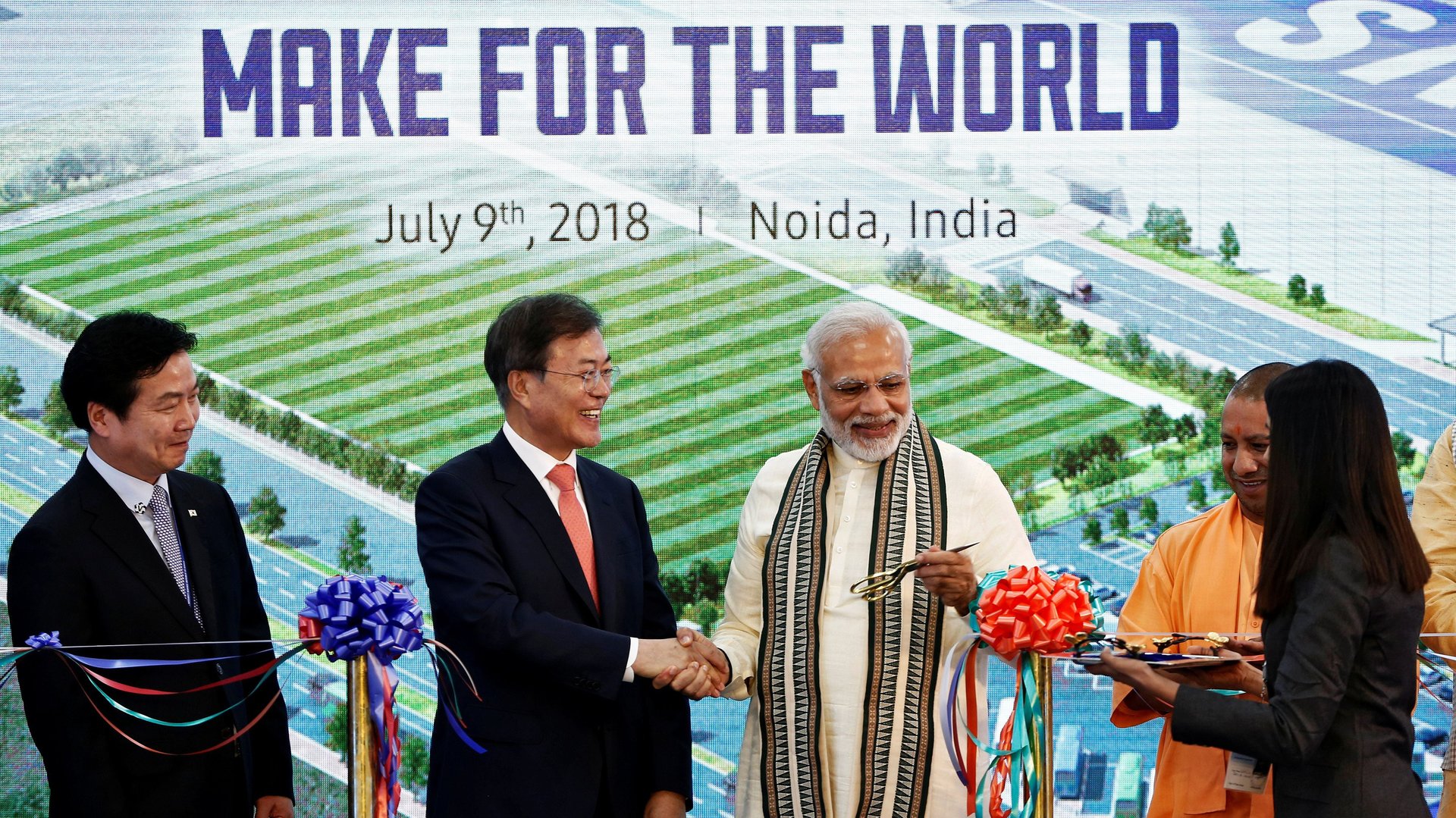India’s phenomenal mobile manufacturing boom in one chart
Indians aren’t just talking non-stop on mobile phones, they are also making them like never before.


Indians aren’t just talking non-stop on mobile phones, they are also making them like never before.
Over the last four years, the country has seen a massive boom in the number of mobile manufacturing units under the Narendra Modi government—in fact, a 60-fold increase, if electronics and information technology minister Ravi Shankar Prasad’s July 12 tweet is anything to go by.
These factories, Prasad said, have created more than 400,000 jobs.
Data from independent research firms confirm Prasad’s claim.
In 2014, India had only two mobile-making units, according to data from Hong Kong-based Counterpoint Research. By the end of 2017, there were 123. A number of foreign phone makers have entered the scene in recent years. Just this month, South Korea’s Samsung set up the world’s largest mobile factory in the northern Indian state of Uttar Pradesh.
However, industry experts add a caveat.
Most of these factories simply assemble parts imported from countries like China, Tarun Pathak of Counterpoint said.
For example, Cupertino-based Apple has been assembling the iPhone SE in India and now reportedly plans to start assembly of the iPhone 6S, too.
Since manufacturing has not been India’s forte for decades, the country lacks an ecosystem of skilled labour and investments. Moreover, for India to start making phones, it must undertake the herculean task of setting up factories that manufacture the components.
The Manufacturers’ Association for Information Technology (MAIT), the apex body representing India’s hardware sectors, claims that the newly launched goods and services tax regime favours IT importers over small domestic producers in some cases.
“It will not happen overnight,” said Jaipal Singh, a senior analyst at International Data Corporation (IDC) India. “It will take some time to bring the entire ecosystem in India.”
In comparison, China is considered a faster and cheaper option by not just Chinese and South Korean phone makers but even America’s Apple. In fact, China is a favoured manufacturing destination even among Indian startups.
Nevertheless, analysts say even assembly moving to India is a good sign.
“The government’s strict policies and customs duty hike has worked in India’s favour,” said Singh of IDC. “The first step is to be able to shift assembly to India. Some components are also being manufactured locally already.”